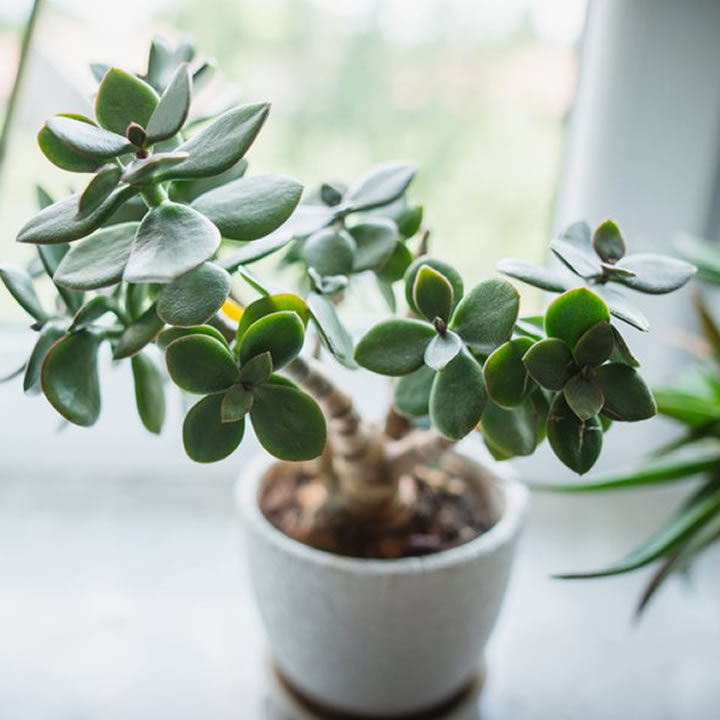Taking care of indoor plants can be a therapeutic exercise that significantly impacts your mood to soothe your mind and relieve stress. Growing jade plants will help increase oxygen circulating in your home if you live in a polluted city.
These plants are part of the indoor plants and have grossly green leaves and thick woody stems. They are low maintenance and live long; some believe they bring fortune and abundance.
If you wish to add more vibrance to your home or would like to gift a friend for their housewarming party, contact us at Portland Garden Centre; we have a garden nursery that offers you the best jade plants.
How To Choose Jade Plants
Any time you go shopping for jade plants, you are more likely to find Crassula ovate, also known as “straight species,” which have leaves that are fleshy, oval, and easy to spot. You may also find some of the plant’s cultivars that are fun to nurture.
Gollum Jade, famous as spoon jade plants, has tubular leaves resembling fingers with spoons at the ends. The leaves of spoon jade are 2- to 3- inch long. You apply the same care techniques for all the jade plants, whether they have flat or finger-like leaves.
Where To Grow Jade Plants
If you have purposed to grow your jade plants as houseplants, ensure you get the brightest spot in the house. The good thing about jade plants is that they can handle direct sunlight that streams into your house through the window.
Most other house plants cannot handle the same amount of direct sunlight as they quickly get sunburnt. Note that jade plants can survive with only a little bright light, but they may not flourish with that light. Like most tropical plants, they don’t do well in the cold; you should keep them away from drafty doors and windows.
If you would like to have your jade plant outdoors during summer, wait for the nighttime temperatures to get to at least 65 degrees F, then you can move them outside but ensure you place them in a protected spot.
You should at least allow the plant to be used to staying outside for some days; then, you can later move them to a more sunny area because sunlight is usually more intense outside.
How To plant Jade Plants
- Get a container that is not more than 2 inches wider than your jade plant’s root ball, with at least one drainage hole. Note that jade plants are okay with being a little crowded.
- Have the container 1/3 full of potting mix (a mixture of organic materials), as it offers efficient drainage and some amount of food that will aid in the growth of your jade plant.
- Put the plant in the pot with the top of the root ball about 1 inch below the container’s rim to give you ample room for watering.
- Use more potting mix to fill around the rootball, then gently pat it.
- Water the jade plant thoroughly and allow it to drain, then put a saucer beneath the pot and place it at its new spot in the house.
How To Water Jade Plants
Jade plants retain water in their leaves because they are succulent, which also explains why they don’t do well if they sit in constantly moist soil. You need to allow about 1 to 2 inches of the top of the soil to dry out between the watering sessions.
Since these plants are indoors, you should water them once every two weeks. However, keep checking the plants so that if you see the leaves having blisters, you are giving them more than the water they need, which will require you to ease up.
How To feed Jade Plants
You need to begin feeding your jade plants as soon as they are a month old after planting them. There is succulent plant food designed to provide succulent plants with the right type and quantity of food to grow in good health and beautifully.
How To prune Jade Plants
When you see dying, dead, and shriveled branches, just know it is time to do the pruning. Snip off the unwanted plants. They are so forgiving that they still grow even after they are cut. If you’d like, you may prune them to the shape of bonsai trees.
How To Create More Jade Plants
Jade plants quickly propagate (or multiply); therefore, you don’t need to worry if your friend falls in love with your plants. You only need to break a piece, strip its lower leaves off, and let the bottom of the cut piece dry out in a few days.
The next step should be sticking the plant cutting in the potting mix before you give it to your friend.

